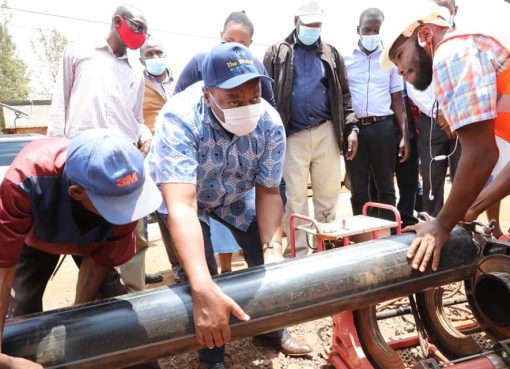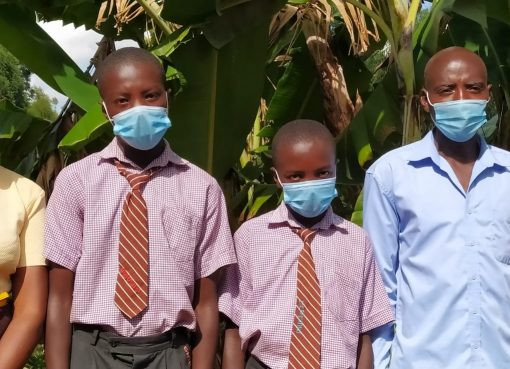Murang’a Assembly has raised concern over the poor state and management of fish farming (aquaculture) in the county.
In a report tabled before the House by Ichagaki MCA Hilary Muigai Muchoki on the status of the fisheries sector in the county, it was revealed that the county is facing a lot of challenges due to the high investment capital required for procuring fish farming inputs like fish feeds and fingerlings and basic aquaculture equipment, hence discouraging public investment in the fishery sector.
Muigai noted that the high cost of fish feed hinders the growth and development of aquaculture in the county as it contributes about 60–80 percent of the total cost of production.
“The cost of fish feed is extremely high. The feed conversion ratio is approximately 1.5 kg of fish feed to produce 1kg of fish, and currently quality fish feeds retail at Sh4200 per 25 kg bag,” said Muigai, a member of the agriculture, livestock, and fisheries committee.
The report stated that most soils in the county are volcanic and permeable to water, hence the need for lining earthen ponds or the development of concrete ponds, which is expensive for the fish farmers.
“Fishing equipment is expensive and out of reach for most of our fish farmers, like seine nets, cover nets, and scoop nets,” Muigai said, adding that the total number of farmers practicing aquaculture in the county is only 2,392.
Fisheries activities in the county are administratively carried out through eight subcounties: Murang’a East, Kangema, Murang’a South, Mathioya, Kahuro, Kandara, Gatanga, and Kigumo.
Aquatic ecology diversity in the county is derived from a variety of fishery ecosystems that include dams, rivers, and streams.
According to the report, the total number of ponds in the county is 2,511. Out of these, only 201 ponds are stocked with fingerlings. This contributes to a very low percentage of the total number.
“Fish stocking statistics in the ponds are 220,750 fingerlings. Tilapia fingerlings are 207,050, while catfish are 13,700 fingerlings,” he observed, adding that the main cultivable fish species in the county are Nile perch, tilapia, African catfish, goldfish, and rainbow trout.
MCA for Muguru, Moses Muchiri, while supporting the motion, observed that in Kangema subcounty, where the majority of the fish ponds are located, totaling 442, only 40 fish ponds are stocked with fingerlings.
“The county government should provide readily available fingerlings and affordable fish feeds to the farmers,” said Muchiri, adding that they should hire and deploy more extension officers to educate and support the farmers in the various fish farming systems.
Muchiri said fish species are a critical source of micronutrients and omega-3 fatty acids that are important in promoting normal nerve cell development and visual functions in infants and help reduce the risk of heart disease.
“Fish is increasingly being recognized as a source of safe, healthy ‘white’ protein that contributes to nearly one-fifth of global animal protein intake,” he said, adding that there is a need to promote sustainable fish production and utilization of fishery resources.
MCA for Gaturi, Gathee Wa Njeri, supported the motion, observing that most fish farmers lack access to market information that would help them improve fish farming.
“One of the things that disturb farmers is a lack of market for their fish, and this is one area that will need to be improved, especially with the help of the county government”, said Wa Njeri, the vice chairperson of the agriculture, livestock, and fisheries committee.
MCA for Gitugi Edwin Wairagu, while supporting the motion, said that the county government should carry out workshops and seminars with farmers for sensitization and information sharing on fish farming in order to realize the full potential and utilization of the fish ponds. “Fish farming in the county can be developed into a viable enterprise capable of generating wealth, improving the fish farmers livelihoods economically, and improving food and nutritional security in the county,” he said.
Other recommendations are that the fisheries department should liaise with research institutions and other departments to enhance access to critical information on new aquaculture technologies and markets.
The Majority of the MCAs passed the motion to adopt the report, calling for strategies that entail a sustainable increase in production and improved efficiency in the production systems.
With the adoption of the report, the MCAs recommended that the county assembly should enact legislation for the fisheries sector. In addition, the County executive department in charge of fisheries should prepare policy guidelines and regulations for the sector.
By Anita Omwenga





